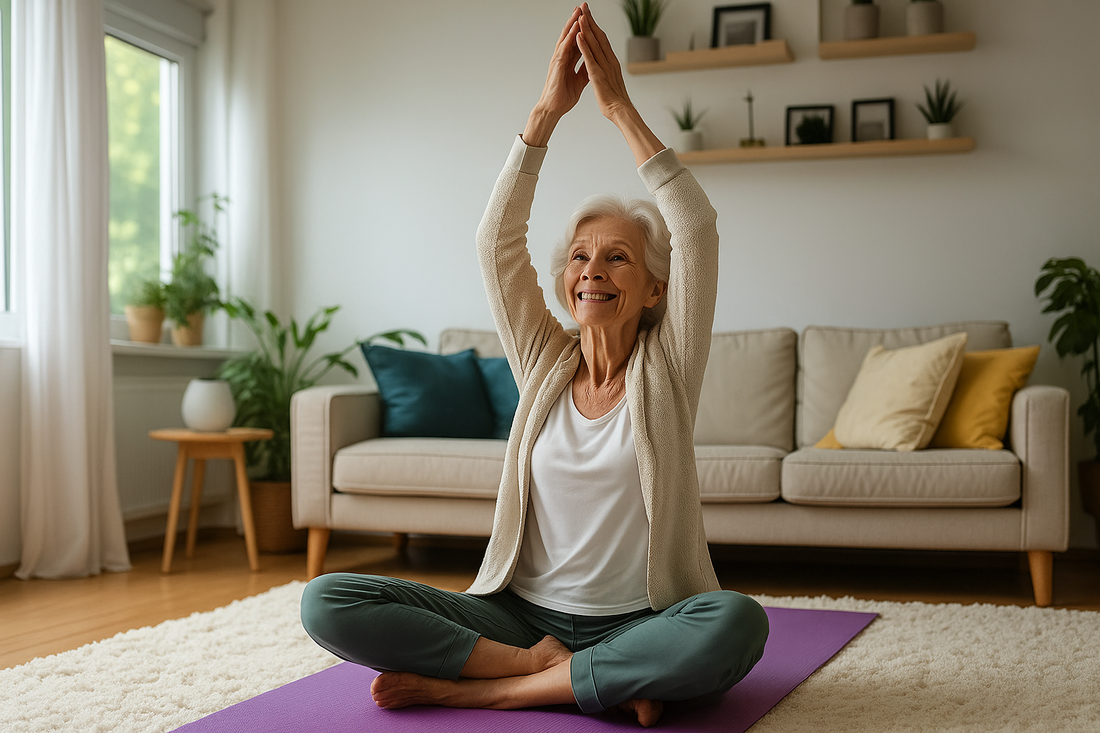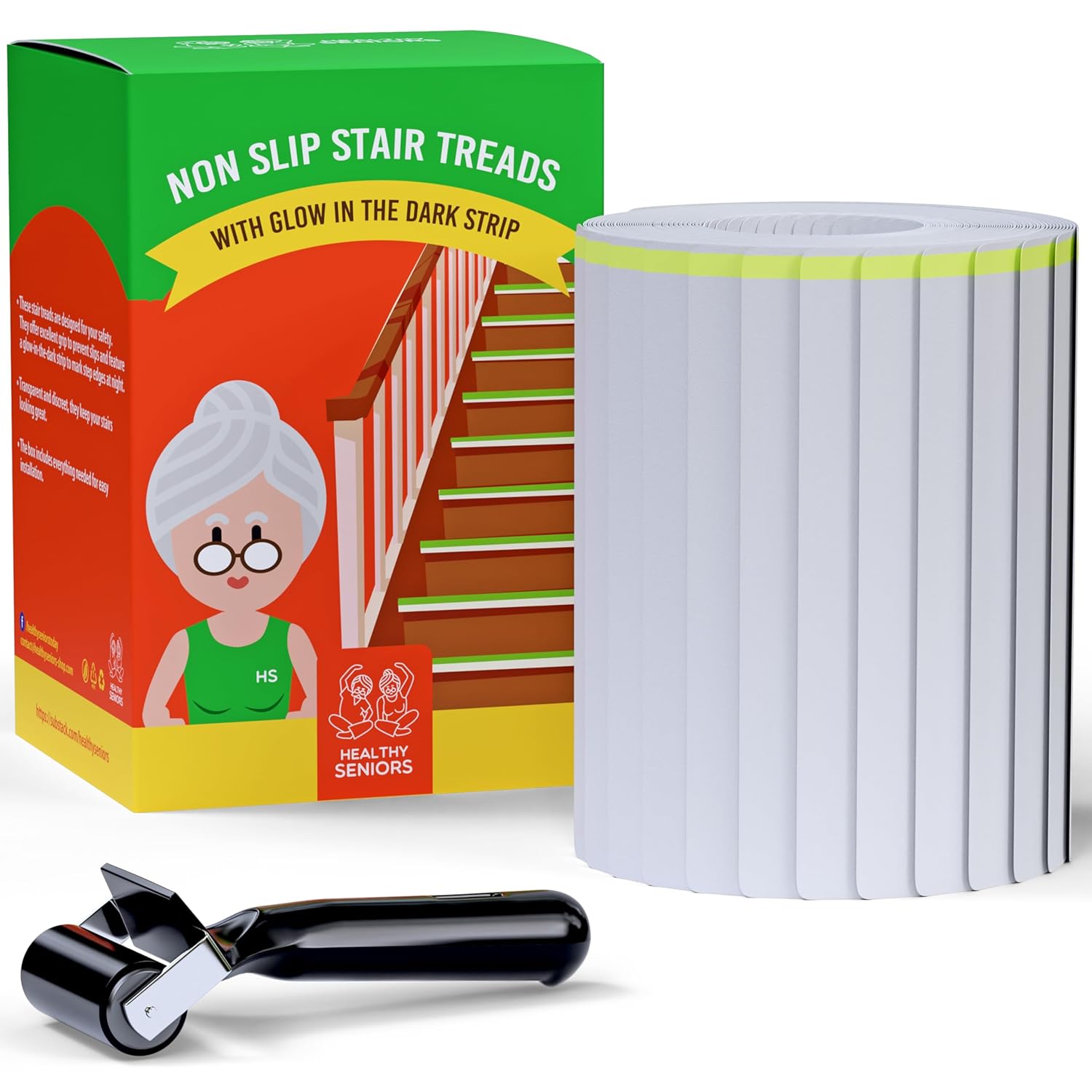
Gentle Daily Stretches for Seniors to Stay Flexible
Marjorie used to start her day by walking her dog and reaching easily for the teacup on the top shelf. But lately, even getting out of bed had begun to feel stiff. “I thought I was just getting old,” she said. “Turns out, I just needed to stretch!”
It’s no secret, our bodies change as we age.
Muscles tighten, joints feel a little more stubborn, and our balance can shift.
But there’s good news: a simple daily stretching routine can work wonders for flexibility, posture, and overall well-being.
Whether you live in your own home, a cozy senior housing apartment, or a vibrant senior living community, daily stretches can help you stay mobile, independent, and pain-free.
And if you're receiving care for the elderly at home, stretching is a gentle, effective way to support your health and stay active.
Let’s dive into the how and why, and give you easy, feel-good stretches to try today.
Why Flexibility Matters as We Age
Our muscles and joints naturally lose elasticity with age. That’s perfectly normal, but it doesn’t mean we’re stuck with stiffness.
Stretching helps:
- Maintain mobility and independence
- Reduce the risk of falls
- Ease aches and joint tension
- Improve posture and circulation
- Support better sleep and digestion
Regular stretching can be especially powerful for residents in senior retirement communities and those attending programs at a senior center. It encourages social movement, boosts confidence, and makes everyday activities like tying shoes or reaching for the top cabinet easier and safer.
Gentle Daily Stretching Routine for Seniors
This full-body stretching routine takes just 10–15 minutes and can be done from a chair or standing. Always breathe deeply and move within your comfort zone; stretching should never hurt.

1. Neck Stretch (Seated or Standing)
Great for easing tech-neck or post-sleep stiffness.
- Sit or stand tall
- Gently tilt your head toward your right shoulder until you feel a soft stretch
- Hold for 10–15 seconds, then switch sides
Tip: Don’t raise your shoulder; try to keep it relaxed for a deeper stretch.
2. Shoulder Rolls
Opens up tight shoulders and improves posture.
- Sit or stand with your arms relaxed at your sides
- Roll your shoulders forward 5 times, then backward 5 times
- Repeat 2–3 rounds
Bonus: Try this before meals to open up your chest and improve digestion.
3. Arm and Chest Stretch
Improves shoulder mobility and opens the chest for better breathing.
- Extend both arms behind you (or rest them on your chair’s back)
- Gently squeeze your shoulder blades together
- Hold for 10–20 seconds
Modify: If hands don’t reach behind, simply press them against a wall behind you instead.
4. Seated Spinal Twist
Improves spine flexibility and supports digestion.
- Sit upright in a chair
- Place your right hand on the outside of your left thigh
- Gently twist your torso to the left, looking over your shoulder
- Hold for 10–15 seconds, then repeat on the other side
Caution: Keep hips facing forward; only the upper body should twist.
5. Wrist and Hand Stretch
Perfect for those with arthritis or limited hand strength.
- Extend one arm forward, palm facing up
- Use your other hand to gently pull your fingers back toward you
- Hold for 10 seconds, switch hands
Bonus: Do this daily if you enjoy knitting, puzzles, or gardening!
6. Ankle Circles
Supports balance, circulation, and foot flexibility.
- Sit comfortably
- Lift one foot slightly off the ground
- Rotate your ankle in slow circles, 5 in each direction
- Repeat with the other foot
Easy tip: Try this while watching TV or reading.
7. Standing Calf Stretch
Loosens tight calves and supports better walking balance.
- Stand and place your hands on a wall or sturdy surface
- Step one leg back, keeping the heel on the floor and the knee straight
- Gently lean forward until you feel a stretch in the calf
- Hold for 15–20 seconds, then switch legs
Modify: Do this near a wall or counter for extra support.
8. Seated Hamstring Stretch
Supports back flexibility and ease of movement.
- Sit on the edge of a chair
- Extend one leg forward, heel on the ground, toes up
- Keeping your back straight, lean slightly forward until you feel a stretch in the back of your thigh
- Hold for 15–20 seconds, switch sides
Reminder: Don’t round your back, imagine lengthening through the spine.
How to Make Stretching a Habit
Consistency is key. Even 5–10 minutes of daily stretching can lead to noticeable improvements. Here’s how to make it stick:
- Pair it with a routine: Stretch after brushing your teeth or before breakfast
- Set a reminder: Use a phone alarm or sticky note on the fridge
- Stretch with a friend: Join a group at your senior center or invite a neighbor
- Use a chair or wall: Make it safe and accessible, especially in elderly housing
For residents in senior living communities, check if stretching classes are offered. Many locations have gentle movement programs specifically designed for aging bodies.
If you're ready to take things up a notch, check out our Chair Exercises Program with Resistance Bands. It’s perfect for building strength without straining your joints. The set includes two resistance bands (light and medium), a comfortable pair of handles, and a printed exercise guide—plus links to follow along with easy video demonstrations. Since all the exercises are done from a chair, they’re suitable for any fitness level, even if you're just getting started.
Real-Life Inspiration: “I Can Reach Again!”
Stan, 78, started stretching daily after struggling with stiffness that made dressing difficult. “I used to groan just putting on socks,” he laughs. “Now, I stretch for 10 minutes after my morning coffee, and guess what? I can reach my toes again.”
He now leads a weekly stretch session in his senior retirement community courtyard. “We call it the Limber Legends Club,” he grins. “We’re not as bendy as we used to be, but we’re getting there!”
Safety Tips Before You Stretch
- Warm up: March in place or walk around the room for a minute
- Move gently: Never bounce or force a stretch
- Listen to your body: Stop if you feel sharp pain
- Check with your doctor: Especially if you have chronic conditions or are new to exercise
These tips are especially important if you receive care for the elderly at home, as caregivers can help monitor and support safe movement.
Print-Friendly Stretch Reminder
Stick this on your fridge or near your favorite chair:
- Breathe slowly and deeply
- Stretch both sides equally
- Use support (chair, wall) if needed
- Stop if it hurts, gentle is enough
- Celebrate your progress every week!
Caregiver Corner: Supporting Stretching for Seniors
If you’re caring for an older adult, stretching can be a safe, enjoyable part of daily life.
1. Set Up a Comfortable Space
Clear an area with soft lighting, a sturdy chair, and maybe some calming music.
2. Stretch Together
Gentle movement can be a bonding activity. Even seated stretches can be done side-by-side.
3. Encourage without Pressure
If your loved one feels stiff or unsure, remind them that any movement is a win. Start small and celebrate consistency.
Whether you're supporting a parent in elderly care, visiting someone in senior housing, or guiding an older friend, stretching is a gift that gives back every day.
A flexible body leads to a flexible life, full of ease, comfort, and confidence. So why not start today?
Try this today: Pick two stretches from the list above and do them right now. Just two minutes and you’re already on your way to moving more freely.
Share this with a friend or fellow resident who wants to feel looser and lighter every day. It’s never too late to stretch into something better.
Liked this post?
Subscribe to our free weekly newsletter at blog.wearehealthyseniors.com to get more stories, tools, and encouragement just like this—delivered straight to your inbox every week.



